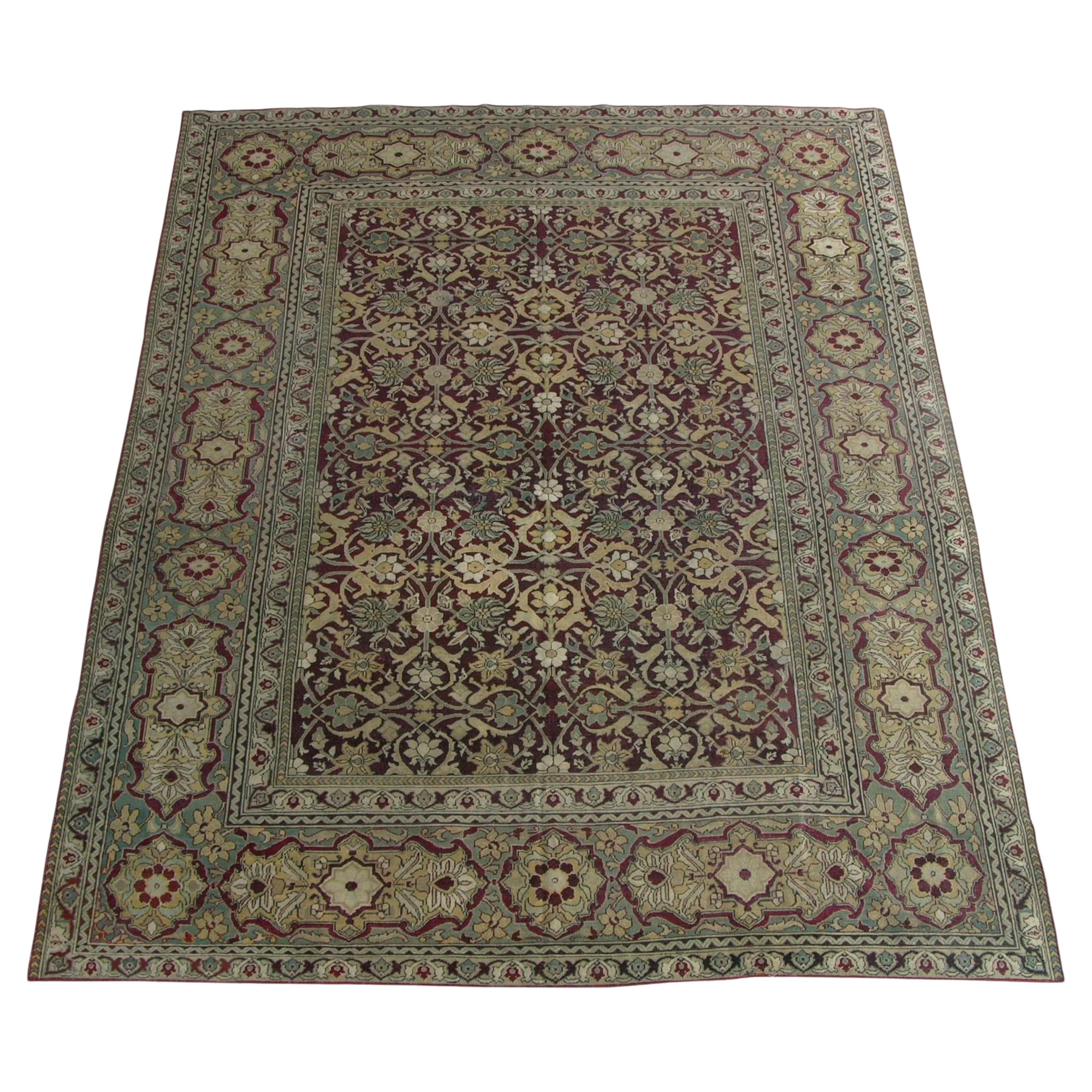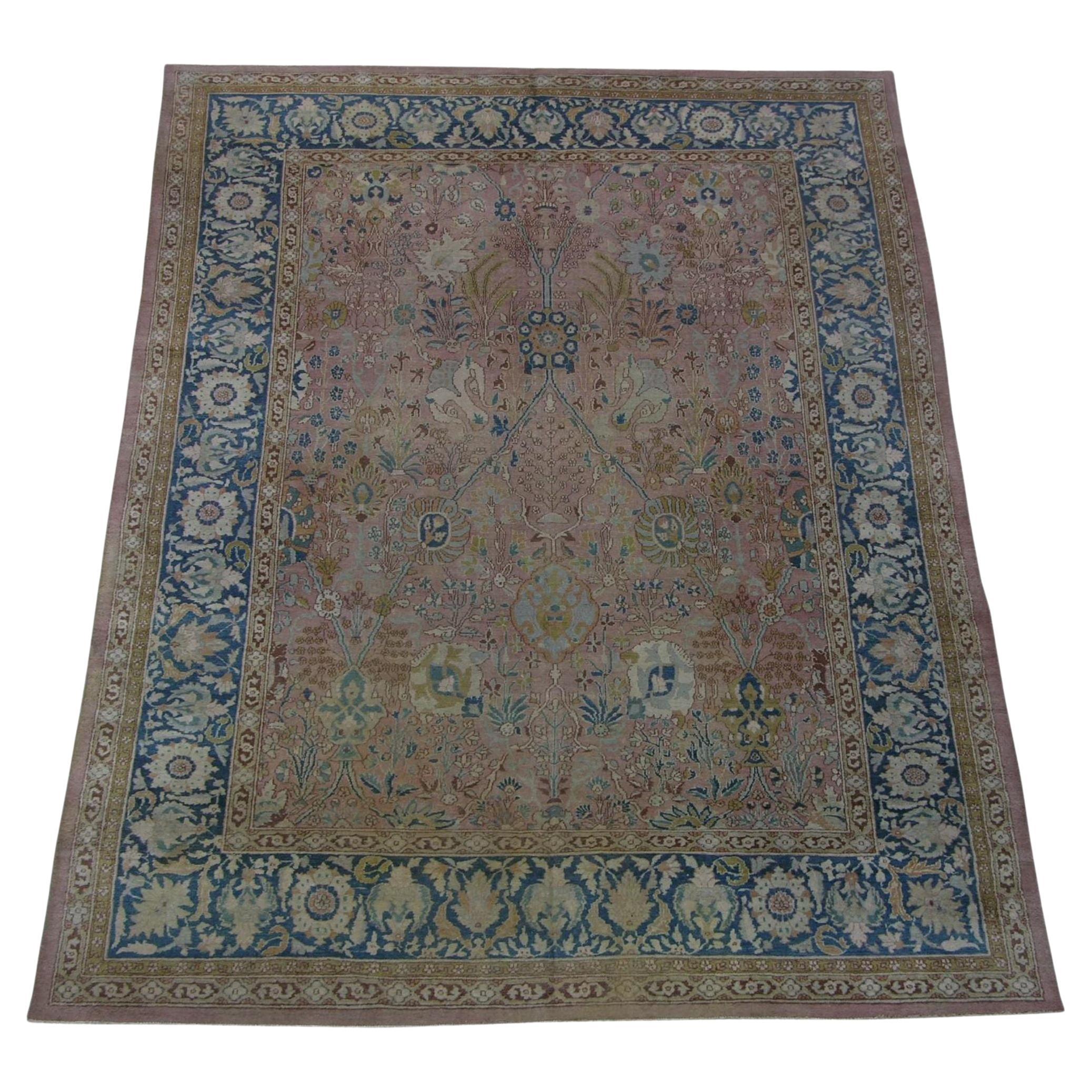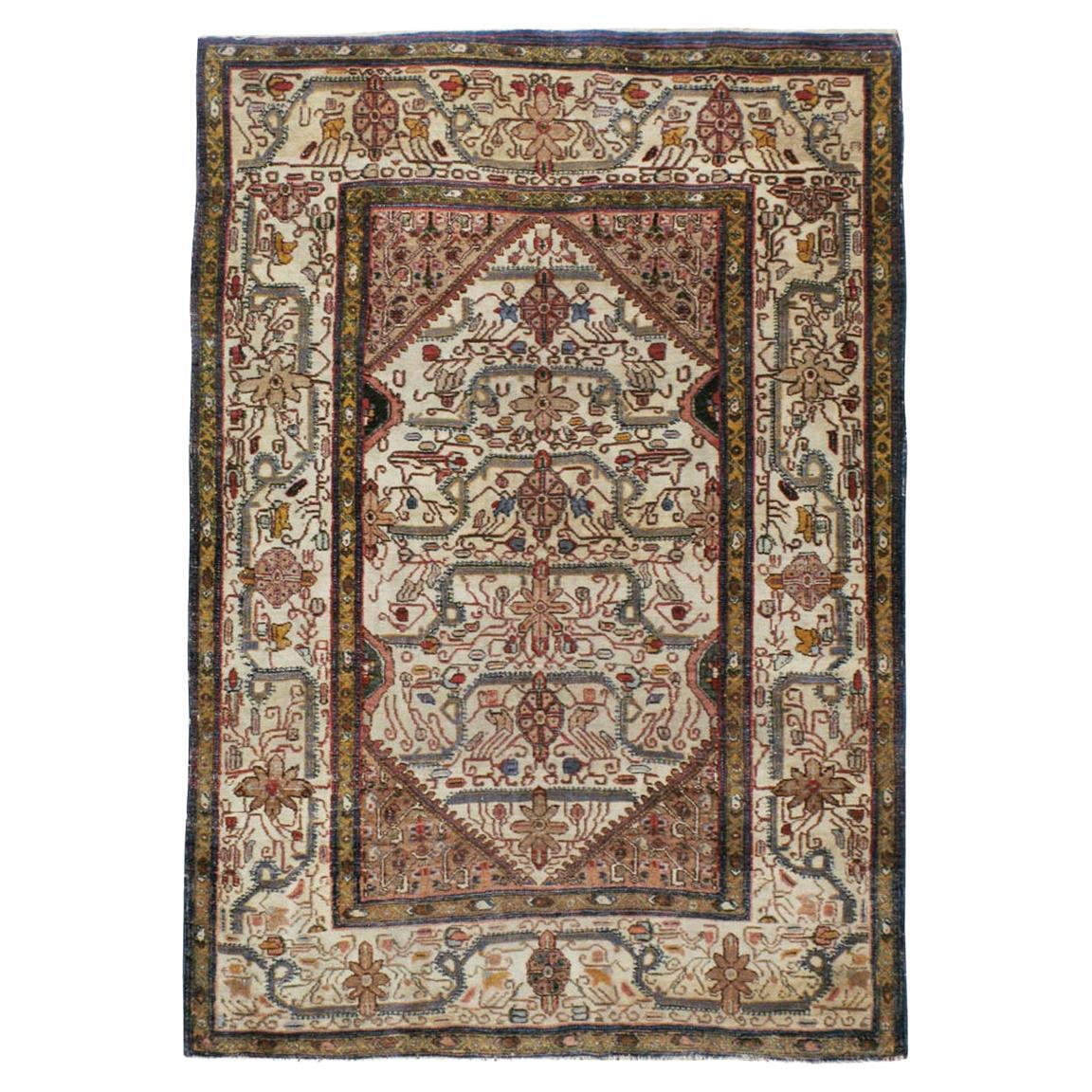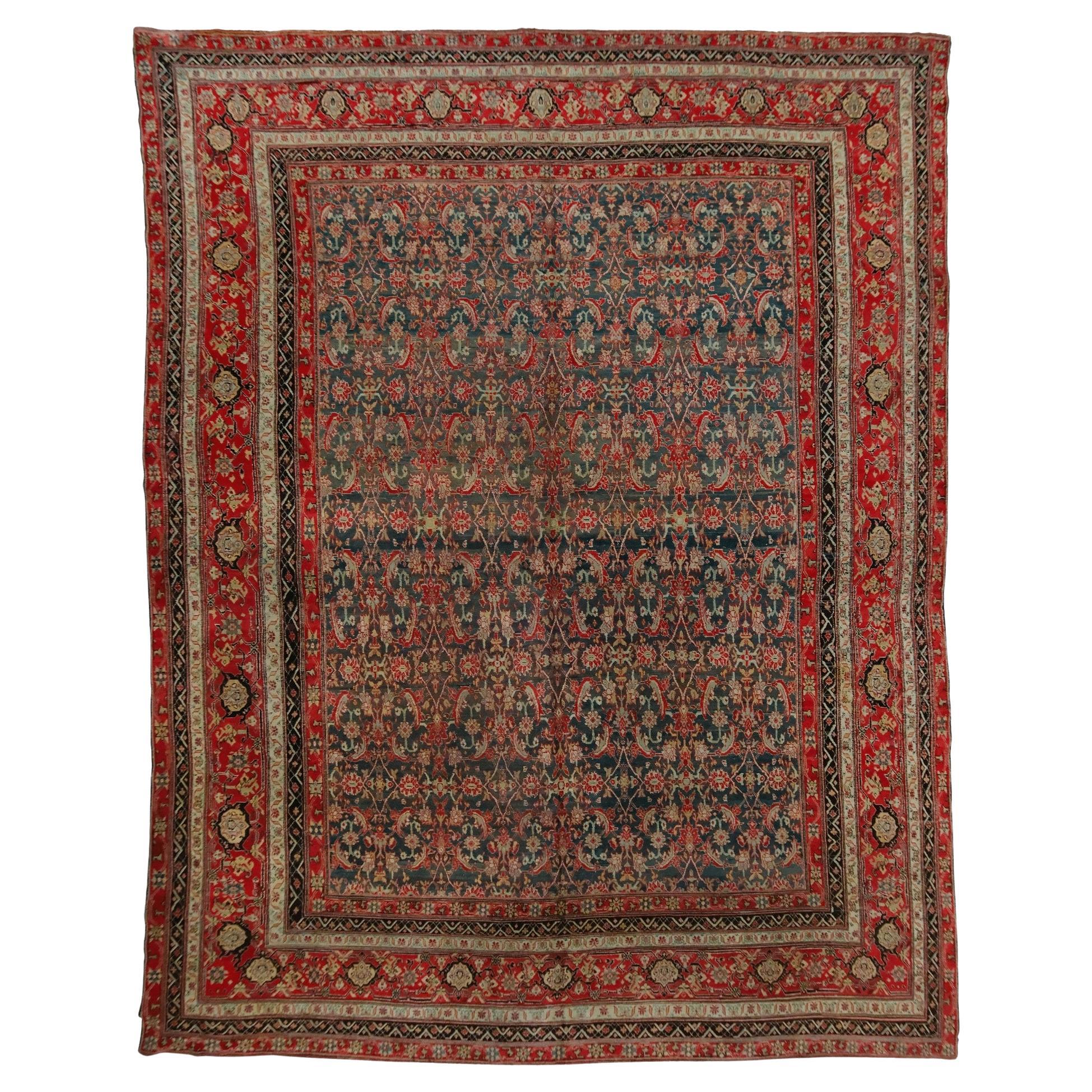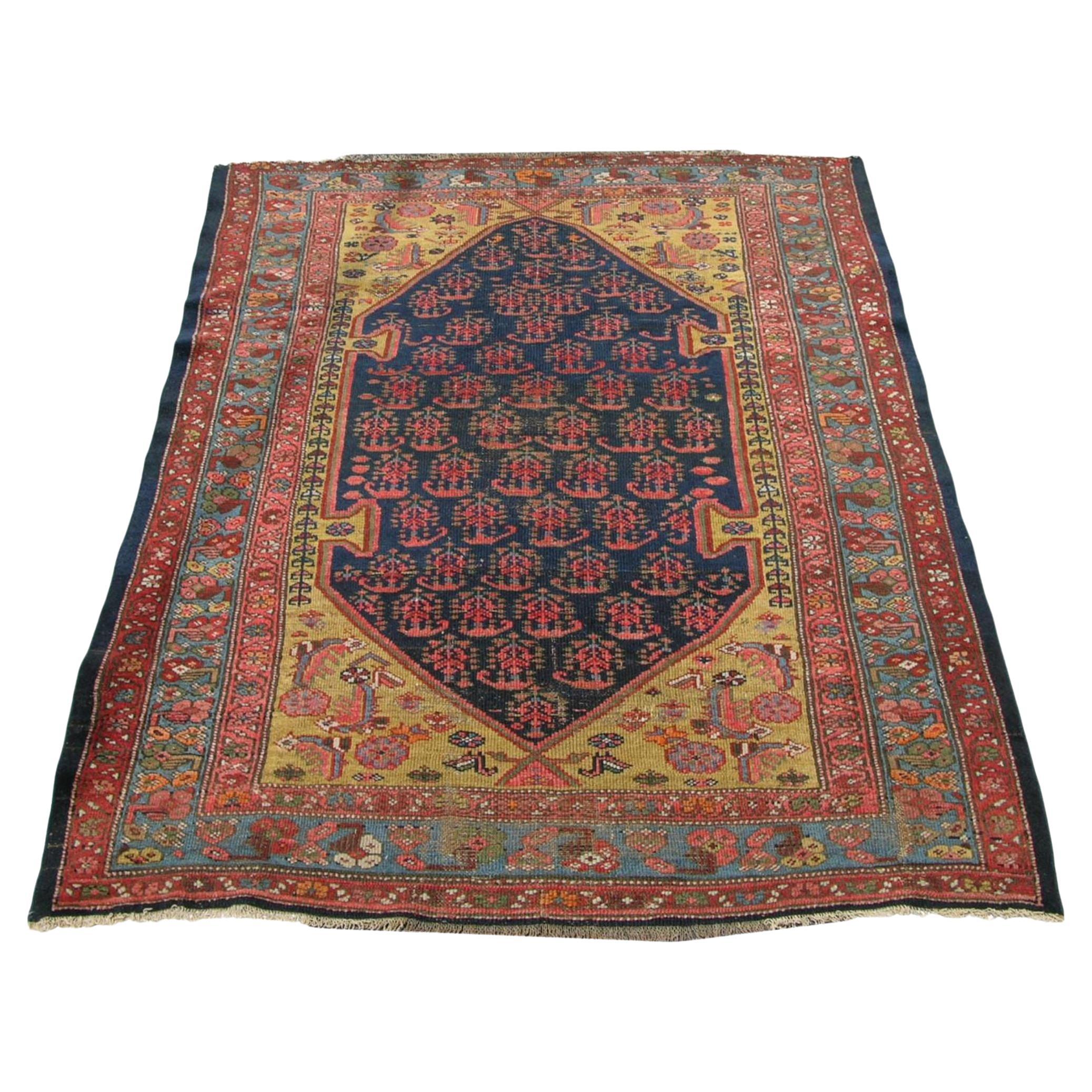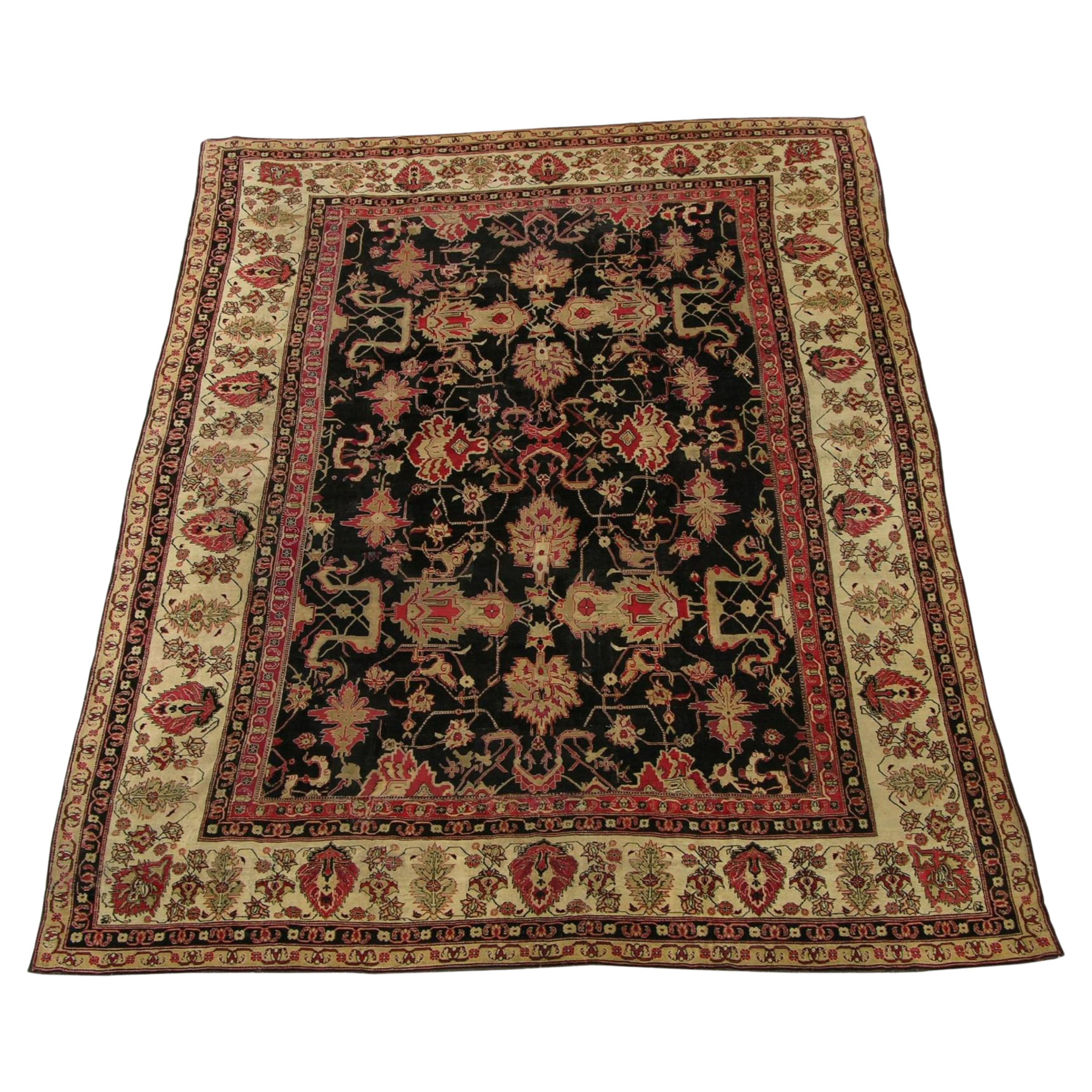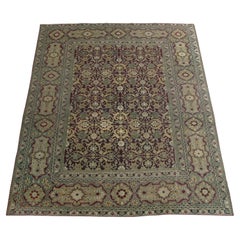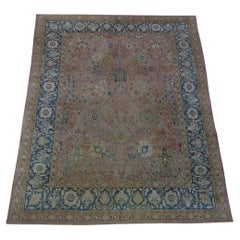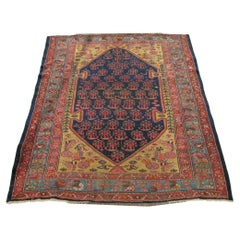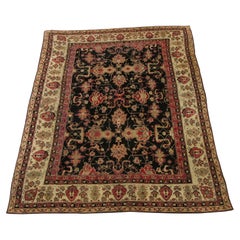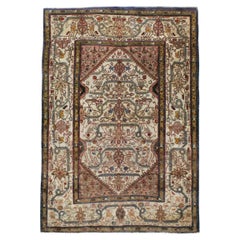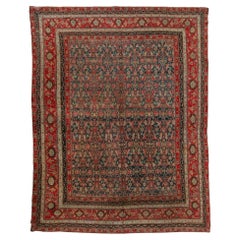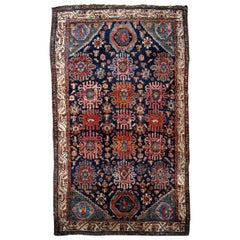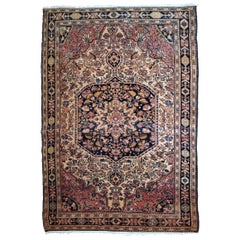Want more images or videos?
Request additional images or videos from the seller
1 of 5
1900s Antique Indian Amritsar Rug
$21,750
£16,339.21
€18,841.76
CA$30,180.96
A$33,537.71
CHF 17,574.11
MX$411,280.19
NOK 224,147.59
SEK 210,869.82
DKK 140,626.92
Shipping
Retrieving quote...The 1stDibs Promise:
Authenticity Guarantee,
Money-Back Guarantee,
24-Hour Cancellation
About the Item
Antique Amritsar Rugs:
-
The spectacular rugs of Amritsar capture the exotic style of India while incorporating a subtle colonial influence. This convergence of eastern and western styles results in an exceptionally alluring appearance that has been beloved by western consumers historically and today. The outstanding old Amritsar carpets were created by influential exporters to fuel the demand for exotic rugs and textiles following Queen Victoria’s 1851 Great Exhibition in the Crystal Palace. Elegant curvilinear botanical motifs and superior materials have made Amritsar carpets particularly desirable and easy to appreciate.
Amritsar carpets are extremely distinctive within the production of Indian carpets. Unlike the Agra Rugs, those produced in Amritsar, in the far north of India near Kashmir, do not represent a continuous production back to Mughal times. They seem to have resulted from a new nineteenth-century initiative under British rule. As such the Amritsar rug weavers were free to approach carpet design more on the basis of western needs than on their own traditions, so their carpets were from the outset well adapted to western decorative use. While their designs responded to contemporary Persian production, Amritsar rugs were generally made with a softer earthier palette, often with a tendency to burgundy or aubergine tones. To this day, they remain a superior decorative rugs by virtue of their flexible formal repertoire and coloration.
Amritsar is located in northwest India. Carpet production began in the late 19th and early 20th centuries during the rise of the British supremacy. Due to Western influence and European demand, the weavers were very prolific during this period. Designs appealed to Western tastes employing large-scale patterns featuring millefleur (thousands of flowers) motifs. A subtle color palate of light blues, yellow, teal and rust characterize these Indian rugs. Amritsar rugs often have cotton foundations, are double weft and use an asymmetrical knot. Very good quality wool is used resulting in a luxurious feel.
The popularity and influence of Amritsar rugs can be traced back to the British Empire’s Colonial rule in India. For the first time, in 1851, at the Great Exhibition in the Crystal Palace, Queen Victoria exposed the world, including laypeople, to the exotic look and feel of the Orient, and began the Western world’s love affair with purchasing “exotic” home furnishings.
The craftspeople of Northern India were quick to capitalize on this trend, making sure they could meet the demand for Amritsar rugs from wealthy people, especially in London, who considered it a status symbol to have beautiful, handcrafted Oriental rugs throughout their opulent homes.
Amritsar rugs were also a point of national pride for the English. For example, every time a Londoner displayed an Amritsar rug in his home, it was a reminder of the tremendous power and scope of the British Empire. National pride, in conjunction with all of the wealth that began pouring into the United Kingdom because from the sale of Oriental goods, were the main drivers in creating a large, highly-profitable market for Oriental artwork, in general.
Collectors in London, the United States, Canada, and other Western markets, were especially enamored by the elegant designs on Amritsar rugs, such as curved botanical motifs, and greatly appreciated the superior materials used in manufacturing these works of art. The soft, earthly palette of most Amritsar rugs, which featured burgundy or aubergine tones, complemented their other furnishings, making the rugs even more desirable.
Today, the Western world’s fascination with Oriental pieces of art – including Amritsar rugs – continues. The rugs remain highly desirable for collectors, mainly because of their flexibility to blend in with the color and style of elegant, modern homes throughout the world. Almost 200 years later, the unique styles of rugs that emerged in the nineteenth century in India are still widely regarded by art critics and historians, as some of the best designs ever created within the art and home furnishings industries.
History of Amritsar Rug:
-
During the period of Colonial rule over India, Amritsar rugs began to reflect Western influences in their design. The craftspeople of Northern India took their chance to profit from the ever-increasing demand for exotic carpets by Queen Victoria. It was after the Great Exhibition in 1851 in the Queen’s Crystal Palace that the wonders of the Oriental lands were brought to the world’s attention.
London took easily to the wildly different and exotic, yet oddly familiar patterns that Amritsar rugs offered. Oriental rugs made the United Kingdom even wealthier than before, and the popularity of exotic artwork was on an uptick. Amritsar rugs reflected British influence in India while still retaining elements of surprise and mystery.
Amritsar rugs center on plant-like motifs that swirl and curve into elegant designs. Rugs are made from materials of only the highest quality. Designed with the British, Americans, and Canadians in mind, Amritsar rugs feature a toned-down earthy palette with burgundy hints that don’t overwhelm the eyes. These rugs are far more modest and much less boastful than oriental rugs woven in bright reds and rich purples. This muted look caught the eyes of London collectors and lead to the popularization of the Amritsar rugs.
The popularity of Amritsar rugs is still unceasing. The Western influence on these Indian carpets leaves these rugs under the intense admiration and adoration of art critics and knowledgeable historians to this day. Their reputation lends to their collectability and desirability. Amritsar rugs don’t seem to be exiting the world stage any time soon.
- Dimensions:Width: 84 in (213.36 cm)Length: 121 in (307.34 cm)
- Style:Other (In the Style Of)
- Materials and Techniques:
- Place of Origin:
- Period:1900-1909
- Date of Manufacture:1900
- Condition:Great Condition.
- Seller Location:Los Angeles, US
- Reference Number:Seller: 5127y1stDibs: LU9020235538152
About the Seller
5.0
Platinum Seller
Premium sellers with a 4.7+ rating and 24-hour response times
Established in 1920
1stDibs seller since 2023
63 sales on 1stDibs
Typical response time: <1 hour
- ShippingRetrieving quote...Shipping from: Los Angeles, US
- Return Policy
Authenticity Guarantee
In the unlikely event there’s an issue with an item’s authenticity, contact us within 1 year for a full refund. DetailsMoney-Back Guarantee
If your item is not as described, is damaged in transit, or does not arrive, contact us within 7 days for a full refund. Details24-Hour Cancellation
You have a 24-hour grace period in which to reconsider your purchase, with no questions asked.Vetted Professional Sellers
Our world-class sellers must adhere to strict standards for service and quality, maintaining the integrity of our listings.Price-Match Guarantee
If you find that a seller listed the same item for a lower price elsewhere, we’ll match it.Trusted Global Delivery
Our best-in-class carrier network provides specialized shipping options worldwide, including custom delivery.More From This Seller
View All1900s Antique Indian Amritsar Rug
Located in Los Angeles, US
Antique Amritsar Rugs – The spectacular rugs of Amritsar capture the exotic style of India while incorporating a subtle colonial influence. This convergence of eastern and western styles results in an exceptionally alluring appearance that has been beloved by western consumers historically and today. The outstanding old Amritsar carpets were created by influential exporters to fuel the demand for exotic rugs...
Category
Antique Early 1900s Asian Other Russian and Scandinavian Rugs
Materials
Wool, Cotton
1900s Antique Indian Amritsar Rug
Located in Los Angeles, US
During the period of Colonial rule over India, Amritsar rugs began to reflect Western influences in their design. The craftspeople of Northern India took their chance to profit from ...
Category
Antique Early 1900s Indian Tribal Indian Rugs
Materials
Wool, Cotton
1900 Antique Zanjan Rug 5'6'' X 4'1''
Located in Los Angeles, US
The city of Zanjan lies in the north-western area of Iran, this ancient city sprung up through salt mining in the area and was an important stop in the Silk Routes of Iran. Zanjan ca...
Category
Antique Early 1900s Asian Other Russian and Scandinavian Rugs
Materials
Wool, Cotton
1900s Antique Indian Rug - 16'2'' X 12'0''
Located in Los Angeles, US
Antique Agra Rugs Agra has been a major center of area rug and carpet production since the great period of Mughal art in the sixteenth and seventeenth centuries. When the carpet indu...
Category
Antique Early 1900s Indian Empire Indian Rugs
Materials
Wool, Cotton
1900s Antique Indian Amritsar Rug - 10'6'' X 7'9''
Located in Los Angeles, US
During the period of Colonial rule over India, Amritsar rugs began to reflect Western influences in their design. The craftspeople of Northern India took their chance to profit from ...
Category
Antique Early 1900s Indian Empire Indian Rugs
Materials
Wool, Cotton
Antique Indian Amritsar Rug - 16'0'' X 9'0''
Located in Los Angeles, US
During the period of Colonial rule over India, Amritsar rugs began to reflect Western influences in their design. The craftspeople of Northern India took their chance to profit from ...
Category
Antique Early 1900s Asian Other Russian and Scandinavian Rugs
Materials
Wool, Cotton
You May Also Like
Early 20th Century Indian Agra Accent Rug
Located in New York, NY
An antique Indian Agra accent rug. The decoration both of the ivory subfield and the matching ivory border of a twisted, looping meandering tendril sprouting smooth and octofoil palm...
Category
Early 20th Century Indian Agra Indian Rugs
Materials
Wool
Late 19th Century Antique Agra Carpet
Located in Sultanahmet, 34
A Timeless Beauty from the Heart of India: The Late 19th Century Agra Carpet
This extraordinary Agra carpet is a masterfully woven work of art produced in the Agra region of India i...
Category
Antique Late 19th Century Indian Indian Rugs
Materials
Wool
Handmade Antique Malayer Style Rug, 1910s, 1B741
Located in Bordeaux, FR
Handmade antique Malayer rug from the beginning of 20th century. The rug is in original good condition, has all-over design on navy blue background.
-condition: original good,
...
Category
Vintage 1910s Asian Indian Rugs
Materials
Wool
Handmade Antique Sarouk Farahan Style Rug, 1900s, 1B793
Located in Bordeaux, FR
Handmade antique Sarouk Farahan rug in original good condition, has some low pile. The rug has been made in the beginning of 20th century.
- Condition: original, some low pile,
...
Category
Antique Early 1900s Asian Indian Rugs
Materials
Wool
Handmade Antique Farahan Style Rug, 1900s, 1B830
Located in Bordeaux, FR
Handmade antique Farahan style rug in original good condition. The rug is from the beginning of 20th century made in floral and geometric designs.
- Condition: Original good,
-...
Category
Antique Early 1900s Asian Indian Rugs
Materials
Wool
Handmade antique Bidjar Style Rug, 1900s, 1B740
Located in Bordeaux, FR
Handmade antique Bidjar rug from the beginning of 20th century. The rug is in original good condition made in red and blue wool.
?-condition: original good,
-circa: 1900s,
-...
Category
Antique Early 1900s Asian Indian Rugs
Materials
Wool
More Ways To Browse
Russian Crystal
Used Victoria Antique Furniture
Eastern European Antiques
1900s Scale
Crystal Palace Antique
Mughal Crystal
Italian Lacquer Dining Room Sets
Modern Low Stools
Stingray Table
Ceramic Round Table
Dining Table With Wheels
French Brass Console
Hand Hammer Sterling
Low Black Coffee Table
Pair Of French Consoles
Tile Top Tables
Antique Gold Rimmed Glasses
Antique Wood Kitchen Tables
